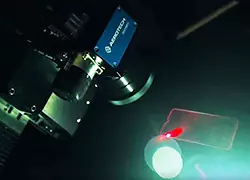In the context of control systems, precision is the measure of a machine's ability to consistently and reliably execute a commanded task or movement. It is a defining performance characteristic that dictates the quality and success of any automated process, especially those operating at micro- or nanometer scales.
While often confused with accuracy, precision refers specifically to the degree of consistency and refinement in the output. The design and performance limits of a precision motion controller are engineered specifically to maximize this consistency, which is the necessary foundation for achieving true precision motion control in industrial applications.
What is precision in a control system?
Precision refers to the degree to which repeated movements, measurements or operations yield the same results. In a control system, this means that if the controller commands a motor to move to position X and then repeats that command ten times, the resulting ten positions will be tightly clustered together. High precision is achieved by minimizing the random errors and variations that occur within the system's dynamic cycle, such as electrical noise, localized temperature fluctuations and transient mechanical vibrations.
In control systems, precision is crucial for maintaining consistent performance and reliability, particularly in high-throughput manufacturing where product quality must not degrade over time or across millions of cycles. The controller achieves this by using high-bandwidth servo loops and advanced digital signal processing. When engineers discuss achieving precision controls, they are focusing on the entire system's ability to minimize deviation from its average performance, which is essential for achieving high levels of precision in applications like semiconductor inspection and medical device manufacturing.
What is the main difference between accuracy and precision?
The main difference between accuracy and precision is their reference point. This distinction is vital in motion control and precision engineering:
-
Accuracy refers to how close a measurement or movement is to the true or desired value. An accurate system hits the absolute target position in the global coordinate frame. Accuracy is often limited by systematic errors, such as thermal drift, incorrect calibration or mechanical wear.
-
Precision refers to the consistency or repeatability of measurements, regardless of the true value. A precise system produces the same results repeatedly but not necessarily the correct ones.
This creates the paradox that a system can be precise without being accurate (e.g., all movement commands land within 5 nm of each other, but they are all 100 nm away from the absolute target). Conversely, a system can be accurate on average but imprecise if its movements are widely scattered. Understanding precision is vital in fields like precision engineering, where both high accuracy (hitting the target) and high precision (consistently hitting the same spot) are necessary to minimize tolerances and maximize part quality.
What is accuracy in terms of robotic movement?
Accuracy in robotic movement refers to the ability of a robotic arm or automated stage to reach a desired position or orientation in its working space. Mathematically, it is the absolute deviation between the commanded target position and the actual final position of the tool center point (TCP). This is a complex metric in robotics because the absolute position relies on the structural integrity, calibration and kinematic model of the multi-joint or multi-axis system.
High accuracy is essential for tasks that require precise manipulation and alignment, such as placing minute electronic components on a circuit board in electronics manufacturing or focusing a laser beam to an exact point for laser processing. Achieving high accuracy often requires sophisticated software techniques like non-linear error mapping and calibration routines that compensate for geometric imperfections in the mechanical structure.
Precision linear actuators are often used to enhance accuracy in robotic systems, as their direct-drive mechanism and high-resolution feedback minimize backlash and mechanical play, making the system's absolute position more predictable.
What is the simple definition of precision?
The simple definition of precision is the repeatability of measurements or the degree of refinement in a measurement process.
In simple terms, it is about how consistently you can achieve the same result. If you aim at a target and every shot lands in the exact same tight cluster, your aim is highly precise. It does not matter where that cluster is on the target, only how small the cluster is.
In a motion control context, high precision means that the variance in the machine's output over time is minimal. This concept is formalized by the resolution of the feedback devices and the noise floor of the control system. In control systems, precision is a key factor in the design of closed-loop control systems because high-speed feedback is used specifically to ensure that the system's output remains consistently close to its last state, cycle after cycle.
Have questions about precision motion control? Ask our experts!
What Are the Advantages of Laser Material Processing? | Benefits & Methods
What are the advantages of laser material processing? The widespread adoption of precision laser material processing across countless industries is...

